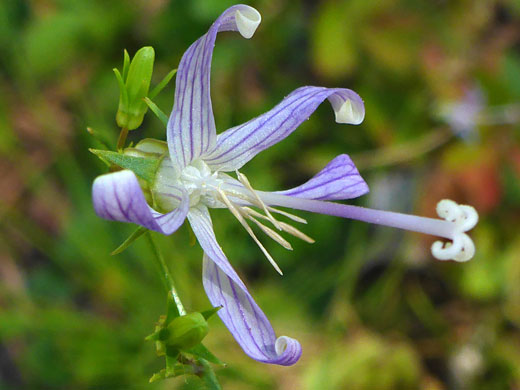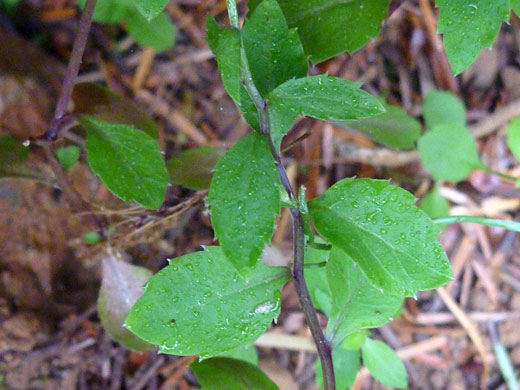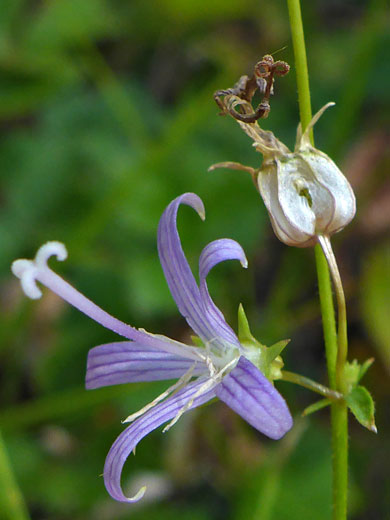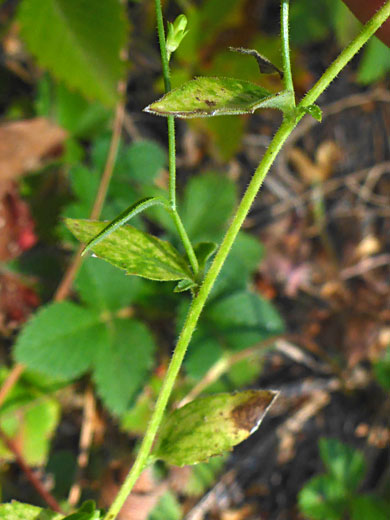Smithiastrum Prenanthoides, California Harebell
Plants > Wildflowers > Campanulaceae > Smithiastrum Prenanthoides
Common name:
California harebell
Family:
Scientific name:
Smithiastrum prenanthoides
Synonyms:
Asyneuma prenanthoides, campanula prenanthoides
Main flower color:
Range:
Northwest California and southwest Oregon
Height:
Up to 4 feet
Habitat:
Mountain conifer forests, and coastal redwoods; from near sea level to 6,500 feet
Leaves:
Ovate, up to 2 inches long, with toothed edges
Season:
June to September
Smithiastrum prenanthoides, the only US species of this mostly European genus, has a limited distribution in northwest California and southwest Oregon, found mostly in redwood forests and other coniferous areas, from near sea level to over 6,000 feet. Plants have rigid stems and many leaves, ovate in outline, with quite large, well-separated teeth along the edges. Leaves may have short petioles but are usually stalkless.
Flowers are produced in small clusters, with up to four attached to a single leaf node; they have a greenish calyx, split at the top into five narrow, spreading lobes, and a blue corolla, also divided, right to the base, into five thin, linear lobes, strongly recurved. A blue/purple style projects well beyond the corolla, split at the top into three branches.
Flowers are produced in small clusters, with up to four attached to a single leaf node; they have a greenish calyx, split at the top into five narrow, spreading lobes, and a blue corolla, also divided, right to the base, into five thin, linear lobes, strongly recurved. A blue/purple style projects well beyond the corolla, split at the top into three branches.
All Contents © Copyright The American Southwest | Comments and Questions | Contribute | Site Map







